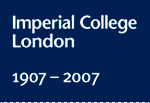Peter Grootenhuis
(Mechanical Engineering, 1941-44, 1946-present)
Peter shares his memories of dodging flying bombs during World War ll
The first year for all the engineering departments was a common course, except for Chemical Engineering. The class was large, close to 200 or so students and many of the 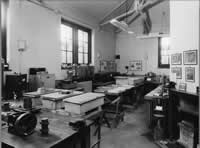 lectures were given in the old Huxley Building. I entered College in October 1941, having been rejected for military service on account of poor eyesight. My father had told me that if I could not join any of the armed forces, the next best would be to get a useful qualification and then work in Industry- I had asked “what is engineering?”
lectures were given in the old Huxley Building. I entered College in October 1941, having been rejected for military service on account of poor eyesight. My father had told me that if I could not join any of the armed forces, the next best would be to get a useful qualification and then work in Industry- I had asked “what is engineering?”
The common first year course for the engineering students was mainly applied mathematics, physics, chemistry and engineering drawing. Life in London had settled to near normality after the heavy daily bombing raids during the autumn of 1940. There were still regular night time alerts and at times the underground rail services would not be running. The union activities went on as normal, and so also the sports clubs. I took up rowing at Putney and in unofficial regattas which were still held at Hammersmith and at Henley. Somehow petrol coupons were obtained to transport a lorry load of boats to Henley, not just by the College Boat Club, but by many others from all over the country. The boatman at Putney, Charley, had been invalided out of the army with a damaged leg, but he was well capable of controlling us in how to lift an eight out of the water and swing it over our heads onto the shore. There were at that time some 5 or 6 eights on the water for Imperial, plus a few fours and sculls. Life went on as normal as could be, not withstanding the earlier heavy bombing raids and thereafter the persistent night alerts. (Photo above: Highways Laboratory, Level 3, Civil Engineering)
The main workshop in Mechanical Engineering was closed to students, as it was used for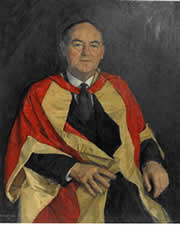 the training of machinists to go and work in Industry and for the production of shell casings. The teaching staff was made up of the “old timers” who were approaching retirement age, or of research orientated people working on contracts for the Ministry of Supply. Amongst the latter were the late Professor Owen Saunders and Dr Margaret Fishenden. These two were well known authorities in combustion and heat transfer. Rumours were rife about the development of a new type of aero engine, but nobody would talk about it. This was of course the jet engine. Another development project on which they were engaged was to do with the fitting of flame throwers to tanks. It was difficult to hide an experiment to do with a large flame. (Photo: Professor Owen Saunders)
the training of machinists to go and work in Industry and for the production of shell casings. The teaching staff was made up of the “old timers” who were approaching retirement age, or of research orientated people working on contracts for the Ministry of Supply. Amongst the latter were the late Professor Owen Saunders and Dr Margaret Fishenden. These two were well known authorities in combustion and heat transfer. Rumours were rife about the development of a new type of aero engine, but nobody would talk about it. This was of course the jet engine. Another development project on which they were engaged was to do with the fitting of flame throwers to tanks. It was difficult to hide an experiment to do with a large flame. (Photo: Professor Owen Saunders)
By that time the engineering faculty of the University of Warsaw had been ccommodated into the Guilds building. A group of Polish engineers were working on the development of 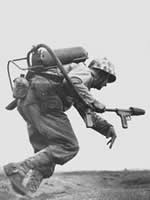 a flame thrower. They carried out the experiments in the open space behind the City and Guilds College. The main lecture theatres, rooms 15 and 18 in the old Guilds building had some small windows at the back. When the Poles were doing some of the trial flame throwing, there would be a loud rushing sound followed by a large flame passing the window. Needless to say, for the next lectures in these rooms everyone was at the back to see this. Health and Safety was of little concern in those days. (Photo left: Marine flamethrower operator, Iwo Jima, February 1945)
a flame thrower. They carried out the experiments in the open space behind the City and Guilds College. The main lecture theatres, rooms 15 and 18 in the old Guilds building had some small windows at the back. When the Poles were doing some of the trial flame throwing, there would be a loud rushing sound followed by a large flame passing the window. Needless to say, for the next lectures in these rooms everyone was at the back to see this. Health and Safety was of little concern in those days. (Photo left: Marine flamethrower operator, Iwo Jima, February 1945)
Another experiment which was difficult to conceal was the development of the fog dispersal burner. The idea was to have a long tray with fuel oil flowing along it. These trays would be placed alongside a runway in order to lift the fog just before a plane was due to land.
The old Goldsmith Laboratory was made
Out Of Bounds, which was an obvious invitation for the more nosy students to find out what was going on. There was a long tray in the middle of the wooden floor, with some fuel running through it and an anxious lab technician trying to set it alight. The roof of the old Goldsmith Lab was made of glass. It was most spectacular when it did go off. The big doors for the lab were kept half open as an escape route, so the students could cram in to have a look. As far as I know, nothing terrible ever happened. It provided a great stimulus to us all to sense some vital war work was going on close to us.
The next phase of excitement came in 1944 when the Germans targeted London with the V1 flying bomb. As soon as an alert was given some of the younger technicians would be sent onto the roof of the Guild to sound the alarm bells when they saw a flying bomb approaching. I and some classmates had a close escape when walking down Exhibition Road towards South Kensington tube station; we heard a flying bomb cut its motor, which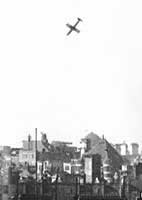 normally meant that it would dive down. It fell and exploded at the junction of Brompton Road and Exhibition Road. We had instinctively shot into the middle of Exhibition Road and had lain on our faces. You can still see the damage to the stone façade of the Science Museum; the bits from the bomb flew over us and no one was hurt. (Photo right: Fall of a V1 missile)
normally meant that it would dive down. It fell and exploded at the junction of Brompton Road and Exhibition Road. We had instinctively shot into the middle of Exhibition Road and had lain on our faces. You can still see the damage to the stone façade of the Science Museum; the bits from the bomb flew over us and no one was hurt. (Photo right: Fall of a V1 missile)
There was a very good spirit amongst the final year students, and it was decided that come what may, the tradition of holding a farewell dinner for the staff would continue; to be held on the evening of the last exam day. The venue was the old Connaught rooms in Holborn. We all turned up and also the staff. As so often, there was another air raid alert but the elderly waiters took no notice. Just as the Student Chairman had started to make his speech, there was an almighty explosion in the street just outside. All the windows were blown in, but the heavy curtains kept back most of the glass, although plenty of debris came on the tables and on ourselves. As far as I can remember, no one was seriously hurt, but it did bring the events to an abrupt end. I had to walk to Paddington Station to catch the last train to Slough, as we had moved out of London by then. We had been living in Bayswater, but were bombed out in October 1940. How and why we ended up in Slough is another story. I joined the Home Guard, which was just like the TV series, and no prizes for who was like Pikey!
© 2007 Imperial College London
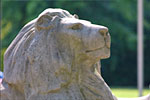
Through the first decade of the twenty-first century the campaign seeks to philanthropically raise £207 million from Imperial’s alumni, staff and friends, and donations from charitable foundations and industry.
Where your support can make a differenceGive now
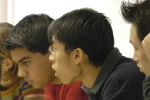
Imperial’s Centenary Year provides an opportunity to recognise and celebrate members of the Imperial community.
View staff and student portraits